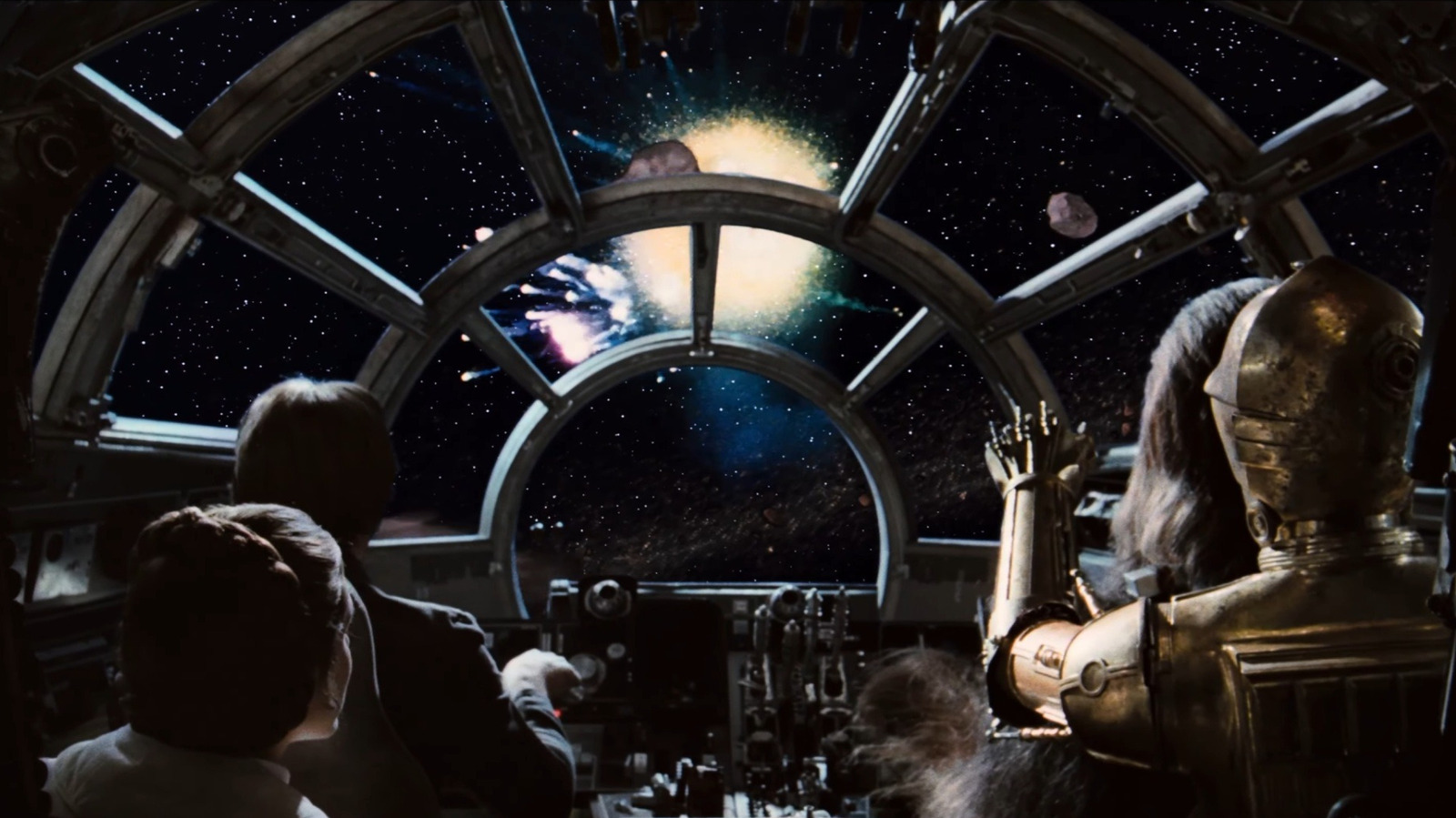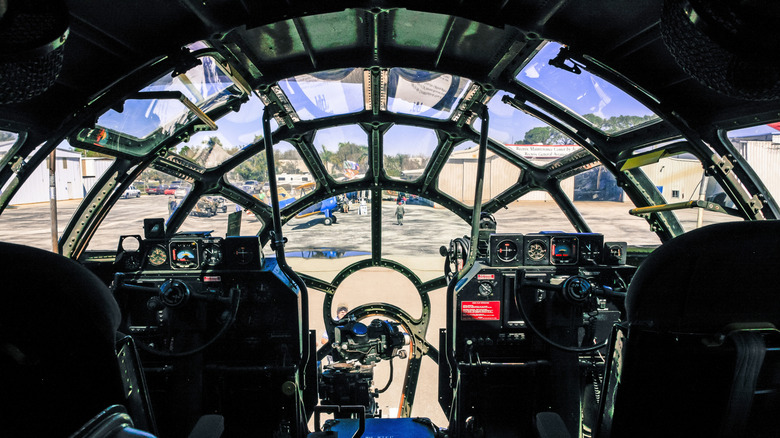
“Star Wars” is pretty much World War II in space. Not just because of the overarching plot involving an evil empire and dogfights between airplanes/spacecraft, but because so much of the first movie — “Episode IV — A New Hope” — was pulled straight from WWII films. George Lucas created “Star Wars” to be reminiscent of old serials like “Flash Gordon” while also evoking the feeling of the war epics of his time. The battles involve exciting ship-on-ship shootouts and gun turrets taking down single-person fighters, with everything feeling like the stakes are galaxy-wide. Lucas even pitched the movie as “The Dirty Dozen” in space.
But there’s another way that “Star Wars” worked hard to capture the feeling of WWII, and it’s not just with the Empire being a stand-in for wartime Germany (watch the movie in German, speeches by Imperial characters take on a new dimension). The extra WWII-ness is also echoed in the design of the ships — especially in the Millennium Falcon. While some call it the Lockheed P-38 Lightning of “Star Wars” thanks to its speed, the ship’s cockpit is more reminiscent of the Boeing B-29 Superfortress. Well, that’s not entirely accurate. It’s actually almost identical to the greenhouse cockpit of a B-29, and that was by request from George Lucas himself.
The Millennium Falcon takes inspiration
On artist Ralph McQuarrie’s concept drawings for the Millennium Falcon, then referred to as a “pirate starship,” there’s a handwritten note next to a sketch of the cockpit that reads, “smaller, like B-52.” This is most likely an accidental mix-up between the B-52 Stratofortress, which began flying in 1954, and the B-29. The cockpit looks nothing like a B-52’s, and that wouldn’t have been the plane in the war movies that inspired George Lucas, anyway. The cramped Millennium Falcon cockpit, which was built with the help of art director Harry Lange, is the spitting image of a B-29’s:
Inside the Falcon’s cockpit set are lights, switches, toggles, and other pieces pulled from actual aircraft. Production photos show Harry Lange creating the control panels for the cockpit, and his drawings of the ship’s interior show that he had the design in mind from the start. Somehow he found the materials to match his vision of an alien ship that felt beaten-up, yet lived-in.
That’s not the end of the similarities, though. The Falcon features gun turrets on the bottom and top of the hull, just like a B-29 Bomber. The difference is that the Millennium Falcon seems to reorient its artificial gravity for the gunners to avoid feelings of disorientation; such a feature was a bit outside of the B-29 engineers’ scope. That being said, the B-29’s gun turrets were remote-controlled, keeping the gunners safer if the enemy tried to destroy said turrets.
Star Wars soars
When “Star Wars” opened in 1977, anyone with a passing familiarity with a B-29 cockpit would have immediately recognized what the Millennium Falcon was portraying. Over 40 years after the movie, the firm that built the B-29, Boeing, built a flying “Star Wars” X-Wing. What reciprocation! Anyone who grew up watching the same WWII movies as George Lucas would also have recognized a few possible “homages” to other movies, though it’d be more accurate to call them shot-for-shot imitations.
X-Wings, Tie Fighters, and The Millennium Falcon all act like they’re rolling through air rather than the vacuum of space. One reason is that Lucas wasn’t going for realism, of course. Spaceship fights are more thrilling when they swoop around rather than reorient with a series of thrusters. But the specific dogfights in “Star Wars” were often ripped straight from other movies such as “The Bridges at Toko-Ri” and “The Dam Busters,” which were more than placeholders in the rough cut Lucas showed to his filmmaker friends, including Brian De Palma and Steven Spielberg. Those scenes essentially acted as storyboards for the final product:
WWII-ness permeates through other ships, too. X-Wings are stand-ins for Spitfires, Y-Wings are analogues for Republic P-47 Thunderbolts, and the closest real-world counterpart for TIE Fighters is likely the Messershmitt Bf 109. Even “Star Wars” blasters are based on our weapons. Scratch that, they’re not just based on real guns, they’re actually made out of real guns. For example, the stormtroopers’ E-11 blaster rifles are Sterling Mk.4 submachine guns festooned with extra bits to make them look more sci-fi. So, the next time you watch “Star Wars,” remember that you’re not just watching a sci-fi fantasy that uses Joseph Campbell’s “hero’s journey” concept; you’re watching a WWII epic with lasers.







